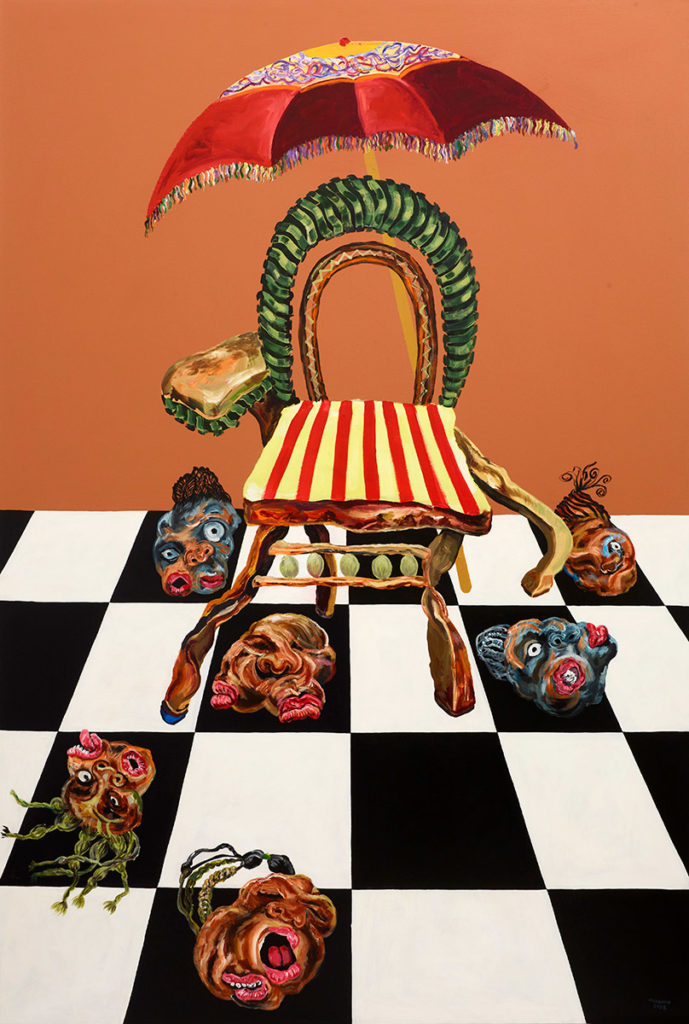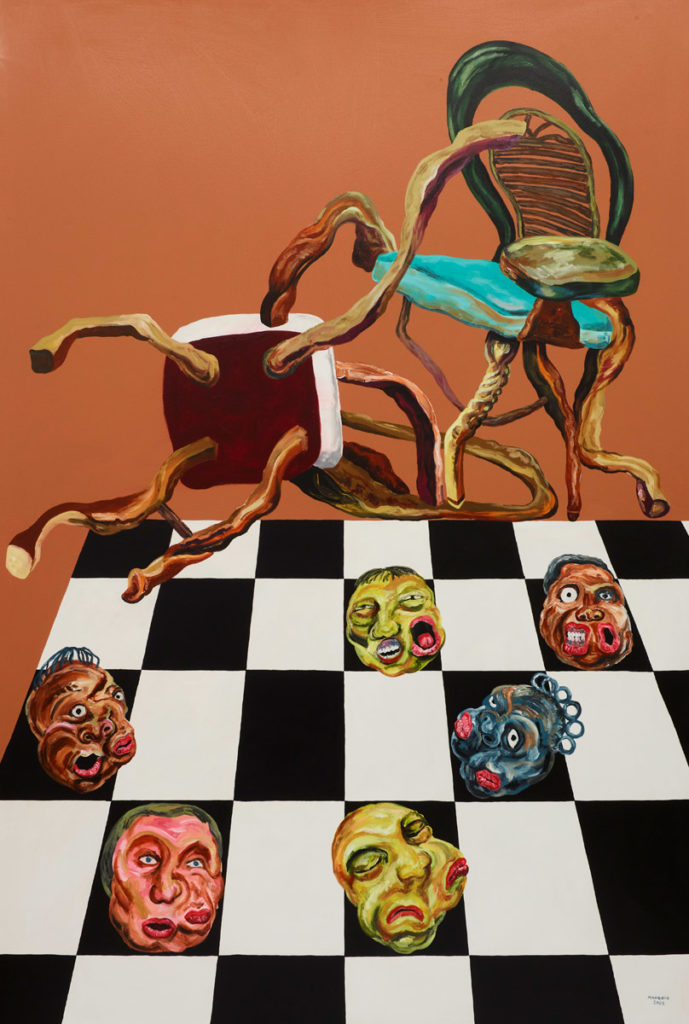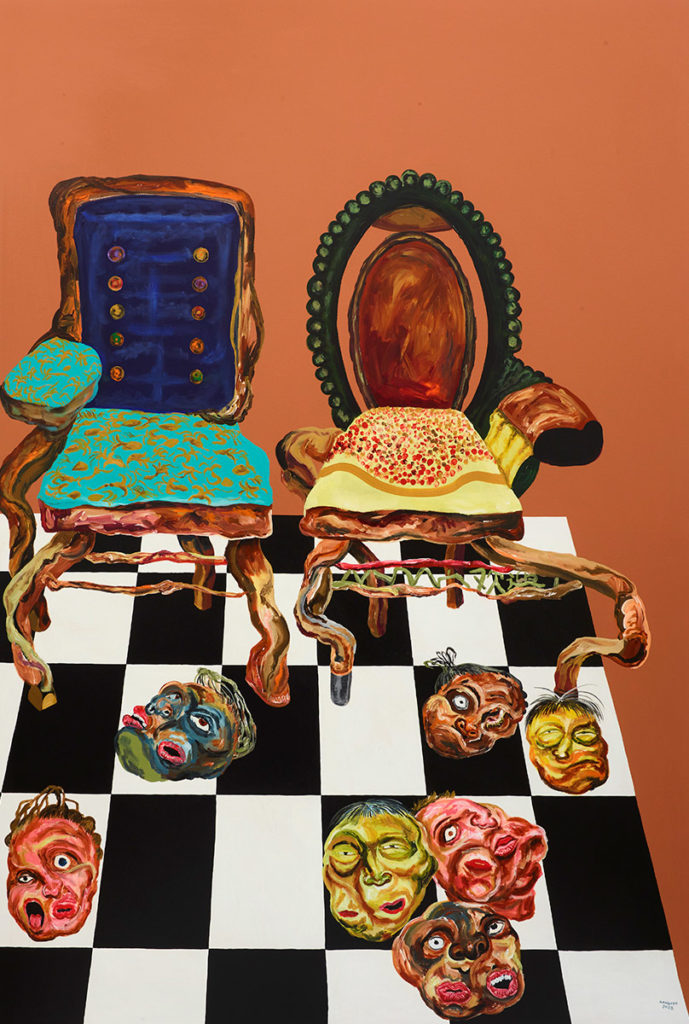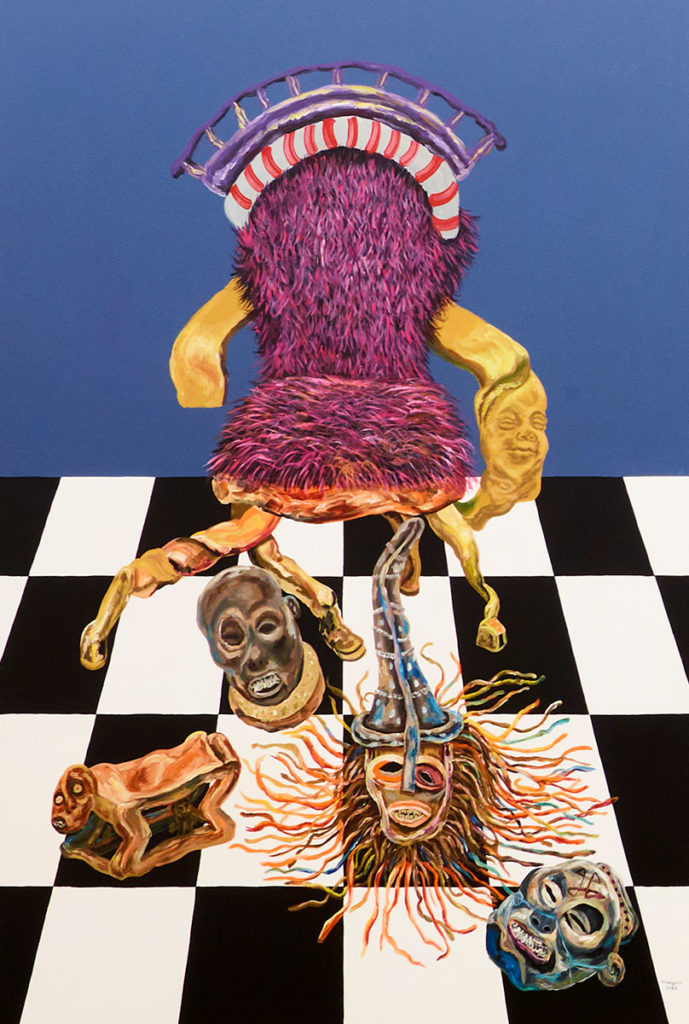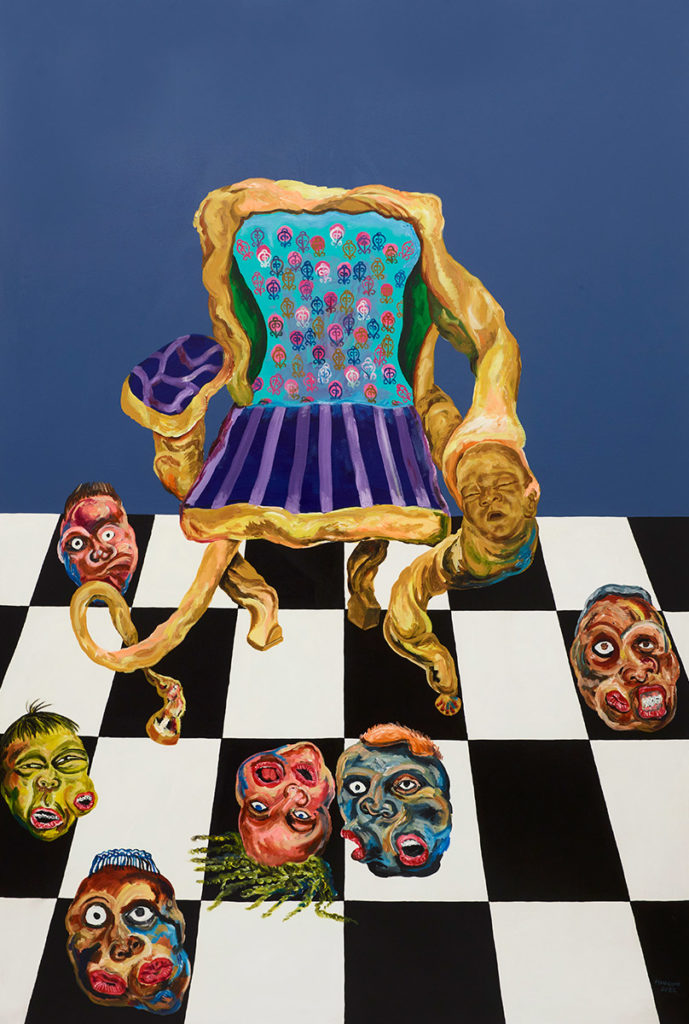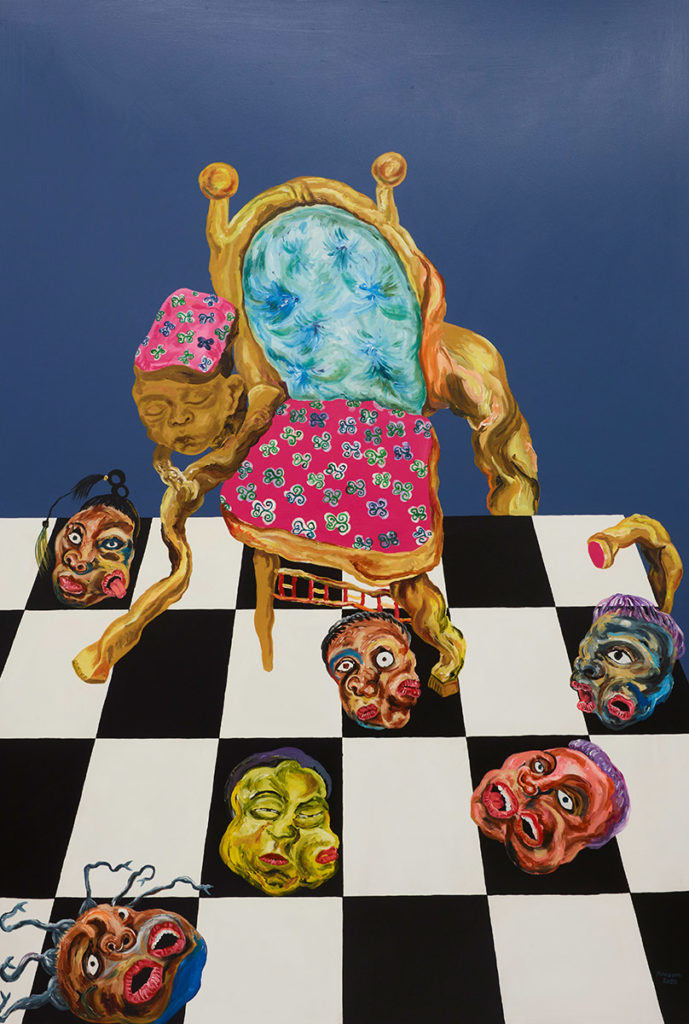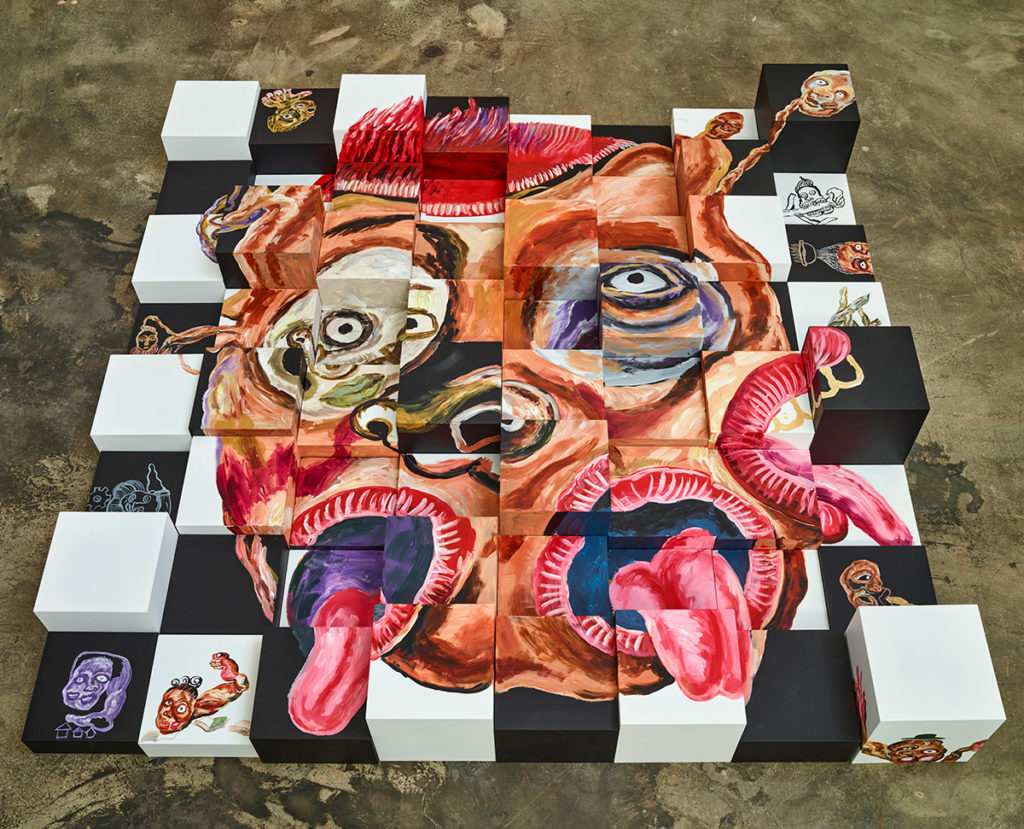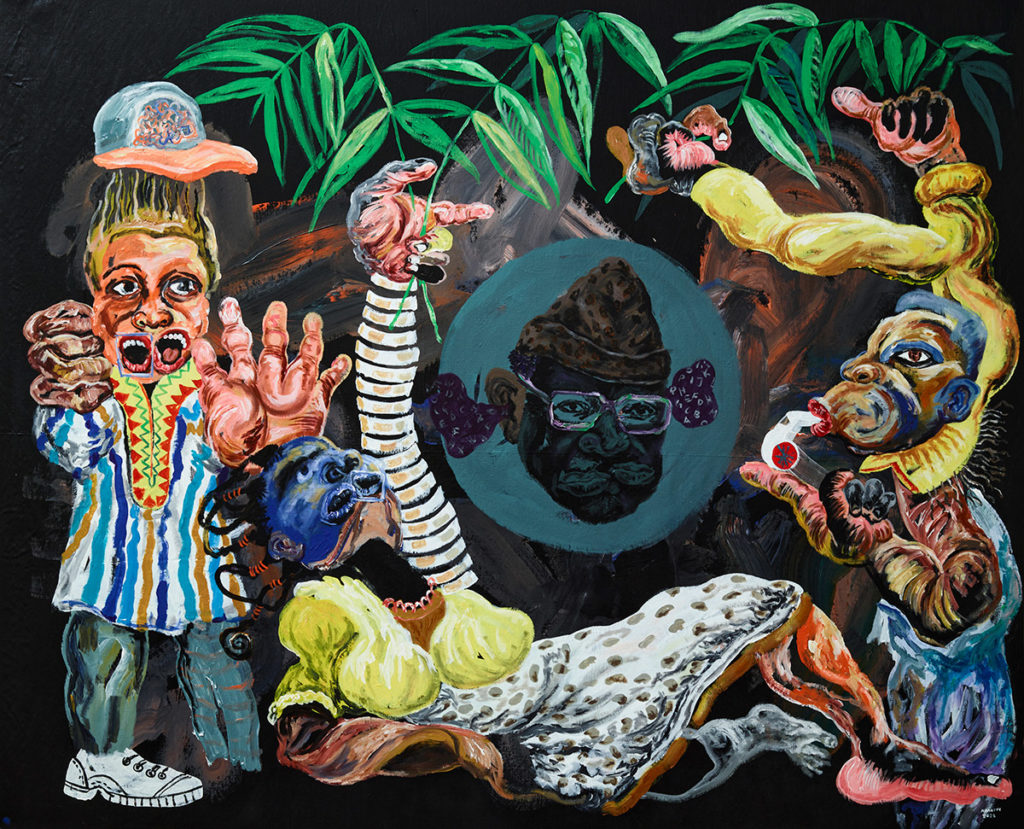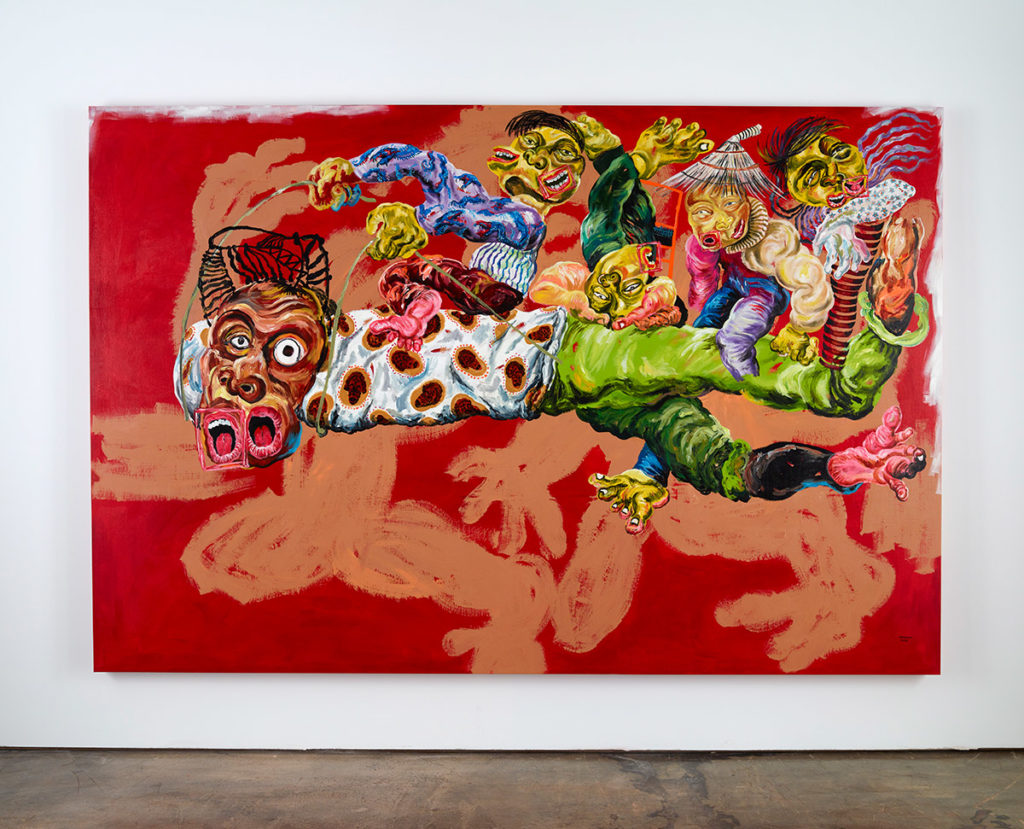overview
04 February – 30 April 2022
O Sistema
Cristiano Mangovo
Curated by Katherine Sirois
For this solo exhibition entitled “O sistema”, Cristiano Mangovo (Angola 1982) presents six large-format paintings dealing with the crucial topic of power. Known for his genuinely critical voice, his stand for social justice and his visual appeals for environmental awareness, Mangovo addresses here the matter of the exercise of power, its conquest and preservation at all costs.
Echoing a common expression in Angola, the exhibition’s title infuses Mangovo’s works with a lighthearted touch of political philosophy. The popular expression is widely used to qualify anything that is dysfunctional, fraudulent or unfair. It highlights the fundamental question that haunts the series, that of the elusive and intangible nature of the “system”. Without pretending to tackle the profound nature of such a system of power, whose magnetism and dynamics are capable of corroding even the most elevated spirit, the paintings aim to stimulate reflection on imperialism, conflicts of interest, rivalries and power games between individuals, tribes, regions, countries, genders or between states and their populations.
These pieces have not been shown before. Provocative, they deploy themselves as partial chess boards on a flat monochrome background. They feature the motif of chairs surrounded by multiple heads without bodies. Depicted in a central and dominant position and recalling a sort of French Louis XV or African thrones, the chairs appear as a symbol of authority and dominion. Their anthropomorphic and zoomorphic appearance give them a lively feel. Empty, overlooking the heads below, they evoke a distant and ongoing governance alongside the enjoyment of privileges, immunities, honours and fiefdoms. No matter who sits, how, when and for how long, the system remains the same, untouchable and unchallenged. The high seating position confers an excellent visibility on the social “field”, whereas the ground level provides a very restricted view. The recurrent feature of the double-mouthed-faces evokes auto-censorship and double-talk. While resting on the floor, on their respective square, and despite their striking expressions and grimaces, we cannot help seeing those heads as decapitated.
The paintings with ochre backdrop conjure up a male-dominated political scene with its cold-hearted style and its tendency for violence. Decked out in blue, the three other paintings address women’s traditional practices, strengths and powers but also their empowerment in relation with social, economic and political endeavour. If the ideas of gender equality and of women’s involvement in a nation’s public life are somehow posed in the West as goals to be achieved, they are mostly non-existent in African countries such as Angola and Mozambique. And if Mangovo points out this grim reality, he still ponders the possibilities of a political power that would be exercised by women. Assuming they would promote positive change, how could they transform the system itself in order to achieve a benevolent yet efficient form of governance?
Mangovo’s interrogations show his own struggle with a belief in the perfectibility of human realities by means of rational, ethical, artistic and spiritual education. Thus, the artist seems aware that aspirations toward utopia are generally followed by disillusionment and disenchantment. That after the hypothetical reform or dismantling of the system, there remains “the system” itself, ad infinitum. Giuseppe di Lampedusa summed it up splendidly with the motto: “Everything must change so that nothing changes”. But what if people would step through the looking glass in which is reflected the motto they perpetuate, becoming aware of their real power?
One of the most prolific among the painters of the Angolan post-war generation, Mangovo has developed a distinctive, exuberant and mature style. Driven by a keen sense of observation and a satirical spirit, his artistic signature features strong visual rhythms, bold colours and contrasts, uninhibited organic forms and off-beat distorted depictions of the body. The intertwining of abstraction, precision of gesture and detailed renderings with an overall crudeness and disquiet on social and emotional levels creates a refreshing Figurative Expressionism. While making use of a polyphonic range of “Human, All Too Human” traits, the artist plays on various registers, from spectral to gushing, from comic to tragic, from supernatural to trivial, hieratic to grotesque or sacred to profane. Committed to issues such as injustice, inequity, poverty and ecocide, practicing the art of typologies and archetypes, his approach goes beyond local specificities to achieve a universal dimension.
exhibition essay “O Sistema” by Katherine Sirois

